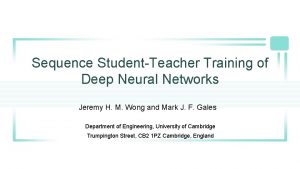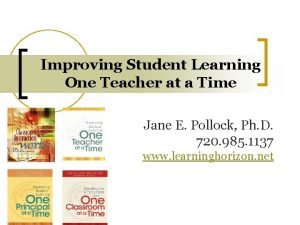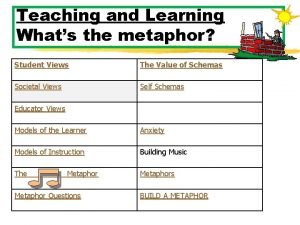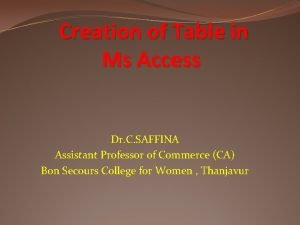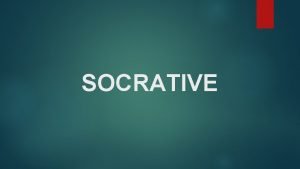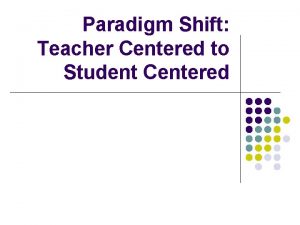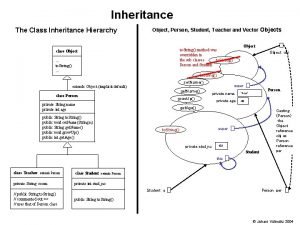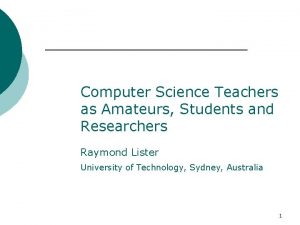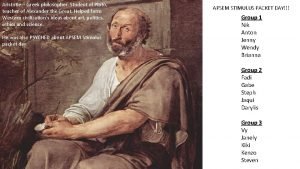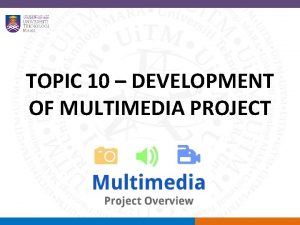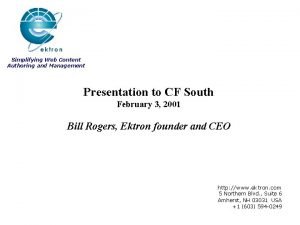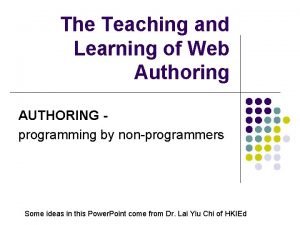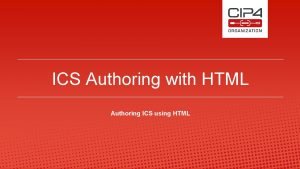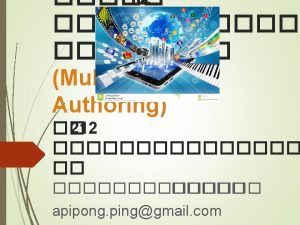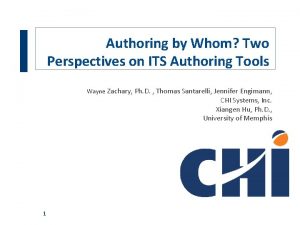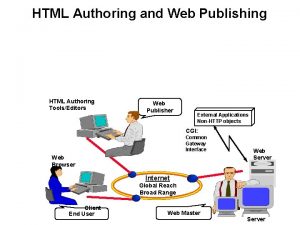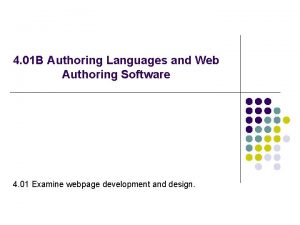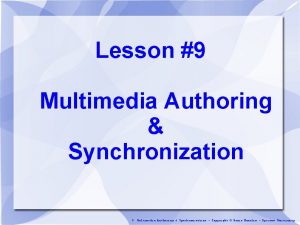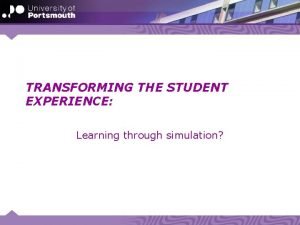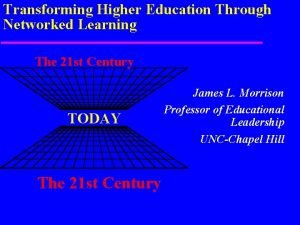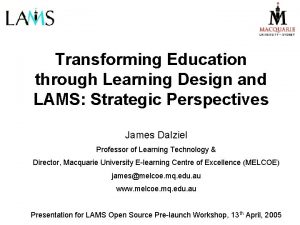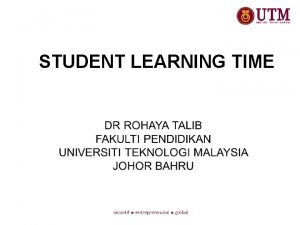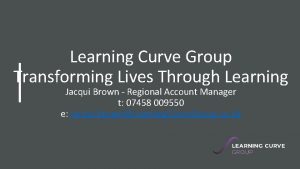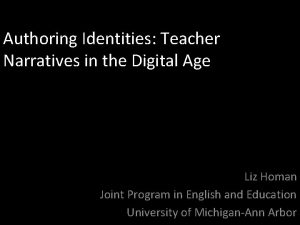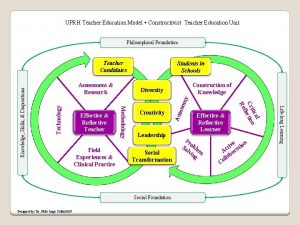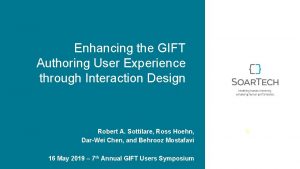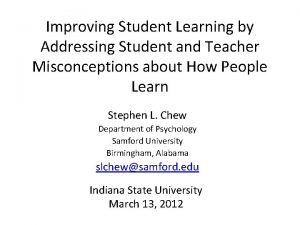Transforming Teacher Education through Student Authoring of Learning



























- Slides: 27

Transforming Teacher Education through Student Authoring of Learning Designs James Dalziel Professor of Learning Technology and Director, Macquarie E-Learning Centre Of Excellence (MELCOE) Macquarie University, Sydney, Australia & Director, LAMS Foundation james@melcoe. mq. edu. au www. melcoe. mq. edu. au Invited presentation for SITE, March 6 th, 2008, Las Vegas, USA

Overview • • • A Vision for Teachers of the Future Learning Design LAMS and Pre-Service Teacher Education Open Education

A Vision for Teachers of the Future • Teachers agree how to describe sequences of educational activities (ie, lesson plans) • Teachers create “digital lesson plans” that make it easy to run educational activities on computers • Teachers share good “teaching ideas” (digital lesson plans) with their colleagues • Teachers are free to adapt, localize and improve good teaching ideas from others • By collectively sharing and improving good teaching ideas, teachers would lead an education revolution

Date of manuscript unknown. Held in Florence, Italy. Photo by Asiir 17: 00, 13 February 2007, Wikipedia. org First page of the manuscript of Bach's lute suite in G Minor. Wikipedia. org

What is Learning Design? • Learning Design is a new approach to describing the teaching and learning process in a structured way • Typically describes sequences of student activities (scaffolding of content + collaboration) – A sequence applies to a class/week/topic (not whole unit) • Focus on sharing and re-using good sequences • Often implemented online with technology – But becoming a general framework for face to face and online

What is Learning Design? • Learning Design is particularly useful for pedagogical approaches that have a structured process, eg: – Problem Based Learning, Role Plays, Inquiry Based Learning • Learning Design focuses on how educators structure activities to foster student learning – Equal adoption in both K-12 schools and universities • Learning Design systems can integrate with CMSs – For students, link(s) from course area to the relevant sequence – Lecturer single-sign-on and easy authoring and launching

Learning Design Example: LAMS • LAMS is the world’s leading software for Learning Design – 1000 s of educators, 80+ countries, translated into 25 languages – Demo accounts available at http: //demo. lamscommunity. org/ • Visual “drag and drop” approach to designing activities – Helps educators to visualise teaching and learning processes • LAMS Sequences can be shared, re-used and adapted – LAMS Community (www. lamscommunity. org) – Approximately 2900 members, 86 countries, 220 shared sequences downloaded 6900 times, 3500 discussion postings • Freely available as open source software – Integrated with CMSs: Blackboard, Web. CT, Moodle, Sakai, etc

LAMS Demonstration “What are the qualities of an effective teacher? ” Step 1: Answer question, then reflect on answers from other students Step 2: Vote on a list of qualities, consider collated votes Step 3: Discuss responses to Steps 1 & 2 Step 4: Read an expert’s view on the topic Step 5: Discuss expert’s view compare to class view Step 6: Personal reflection (or essay if assessment) on initial question, based on initial views, class discussion & expert view Can be run face to face with no technology, or fully online, or a mix Demonstration: Authoring this sequence, then Preview Learner view Example 2: Role play “Adopting Interactive Whiteboards in schools”

LAMS V 2: Authoring view of “Qualities of an Effective Teacher”

LAMS V 2: Adopting Interactive Whiteboards in schools – Role play

LAMS Community – View of various communities & forums

LAMS Community – Repository Summary

LAMS Community – Detailed view of individual sequence

New LAMS Features • Introducing LAMS V 2. 1: – Branching • Teacher allocated • Group-based • Tool-output based (MCQ & Forum so far, more to come) – Sequences in optional • Student choice of one or more sequences • “Branching” is always teacher or system driven (ie, automatic from the student’s perspective); optional sequences allows for student choice in “branching”

Implementation of new Branching Features for LAMS V 2. 1

LAMS 2. 1: Interactive Whiteboards – Role play: Inside branching for role tasks

Pedagogical uses of new features • Can assign different students to different topics – Each group investigates a different aspect of a phenomenon, then reports findings back to the whole class • Can use Branching with Tool Output (and Skip) to provide remediation tasks for only some students (eg, quiz score < X, then do branch remediation activities; otherwise skip branch) • Can allow students to choose from different optional sequences (according to topic, skill, thoroughness, etc) • Can seek student opinion (eg, Role Play Vote), then create group tasks that respond to different opinions

Upcoming: Activity Planner (aka Pedagogic Planner) • A new layer over the top of LAMS that provides good practice templates, advice on choosing and editing, and simplified authoring (NB: under development) Good practice templates + Limited authoring “Full” Authoring Flexible Learning Design Platform: Capable of many pedagogic approaches

LAMS Activity Planner: Selecting a template

LAMS Activity Planner: Filling out the key content for a selected template

LAMS in Pre-service Teacher Education • A two year review of LAMS implementation in pre-service teacher education (Cameron, 2008) found: – 93% of students would prefer using LAMS to create lesson plans (rather than writing/typing the plan) – 93% of students found that having the LAMS activity tools on the screen helped them choose the learning activities for their sequence – 98% of students thought that they might re-use their LAMS sequences in the future (given appropriate facilities)

LAMS in Pre-service Teacher Education • Four themes emerged from the evaluation: 1. LAMS helped students plan all aspects of their lesson 2. LAMS allowed the pre-service teachers to preview their lesson from the learner’s perspective 3. LAMS provides a visual overview of the lesson which can identify the learning styles addressed with the activities employed 4. LAMS creates a standardised template of activities that could be easily modified for future re-use

LAMS in Pre-service Teacher Education • Examples of student comments from the evaluation: – “The amount of detail did help me construct my lesson plan. The detail helped me to organise my ideas on how I wished the lesson to go, but also provided me with what kind of activities could be used. ” – “Being able to view the sequence, you can see where you need to make changes. Whilst creating the sequence you are viewing it form an author’s perspective, whilst when you preview the sequence, you are seeing it from a learner’s perspective. After all, we are creating these sequences for learners to use. So this is vital. ” – “It gives you a visual perspective of how your lesson varies and whether you might have too much of one activity or not enough of another. I think the colours are a really clear indicator of the structure of the lesson. ” – “Yes, I would re-use it. I really liked the way my sequence turned out. It could be used in more than one way. With a minimum of adjustments I could use this sequence in a number of different ways. ”

Open Education • Open Education is about sharing education content and systems without restrictions (eg, Cape Town Declaration – www. capetowndeclaration. org) – Free of cost, but more importantly… – Freedom to share, adapt and improve • LAMS exhibits the principles of open education at several levels: – LAMS software freely available as Open Source Software – LAMS sequences freely shared under Creative Commons – Is LAMS the “Open Teaching” part of “Open Education”?

A Vision for Teachers of the Future • Teachers agree how to describe sequences of educational activities (ie, lesson plans) • Teachers create “digital lesson plans” that make it easy to run educational activities on computers • Teachers share good “teaching ideas” (digital lesson plans) with their colleagues • Teachers are free to adapt, localize and improve good teaching ideas from others • By collectively sharing and improving good teaching ideas, teachers would lead an education revolution

Discussion

Further LAMS Information • Introduction to LAMS – walkthroughs, videos, case studies http: //cd. lamsfoundation. org/ • General demonstration accounts for LAMS http: //demo. lamscommunity. org/ • General information about LAMS http: //www. lamsfoundation. org/ • LAMS Community http: //www. lamscommunity. org/ • Qualities of an Effective Teacher – download sequence from http: //www. lamscommunity. org/dotlrn/clubs/educationalcommunity/lam sresearchdevelopment/lams-seq//sequence? seq%5 fid=256078 • Adoption of Interactive Whiteboards in schools Role Play – download sequence from http: //lamscommunity. org/lamscentral/sequence? seq_id=376440 • Animated “mock-ups” for Pedagogic Planner concept http: //saturn. melcoe. mq. edu. au/jly/Ped_planner. htm http: //saturn. melcoe. mq. edu. au/jly/Ped_plannerv 2. htm
 Transforming teacher education through clinical practice
Transforming teacher education through clinical practice Good morning students
Good morning students Improving student learning one teacher at a time
Improving student learning one teacher at a time Student teacher neural network
Student teacher neural network Improving student learning one teacher at a time
Improving student learning one teacher at a time Student leaning space
Student leaning space Cuadro comparativo de e-learning b-learning y m-learning
Cuadro comparativo de e-learning b-learning y m-learning Erf for head teacher
Erf for head teacher Good morning message to my lecturer
Good morning message to my lecturer Article viii the teachers and learners
Article viii the teachers and learners Metaphorsx
Metaphorsx Direct method of language learning
Direct method of language learning Teacher student database example
Teacher student database example Every student deserves a great teacher
Every student deserves a great teacher Socative login
Socative login Stock image
Stock image Student teacher
Student teacher Teacher and student amateur
Teacher and student amateur Student of plato and teacher of alexander the great
Student of plato and teacher of alexander the great Good morning class how are you today
Good morning class how are you today Conversation teacher and student
Conversation teacher and student By one man sin
By one man sin Furcation involvement classification
Furcation involvement classification Tangent-sawing
Tangent-sawing 14 14
14 14 Stages of project in multimedia
Stages of project in multimedia 55x2080
55x2080 Scorm compliant authoring tool
Scorm compliant authoring tool



